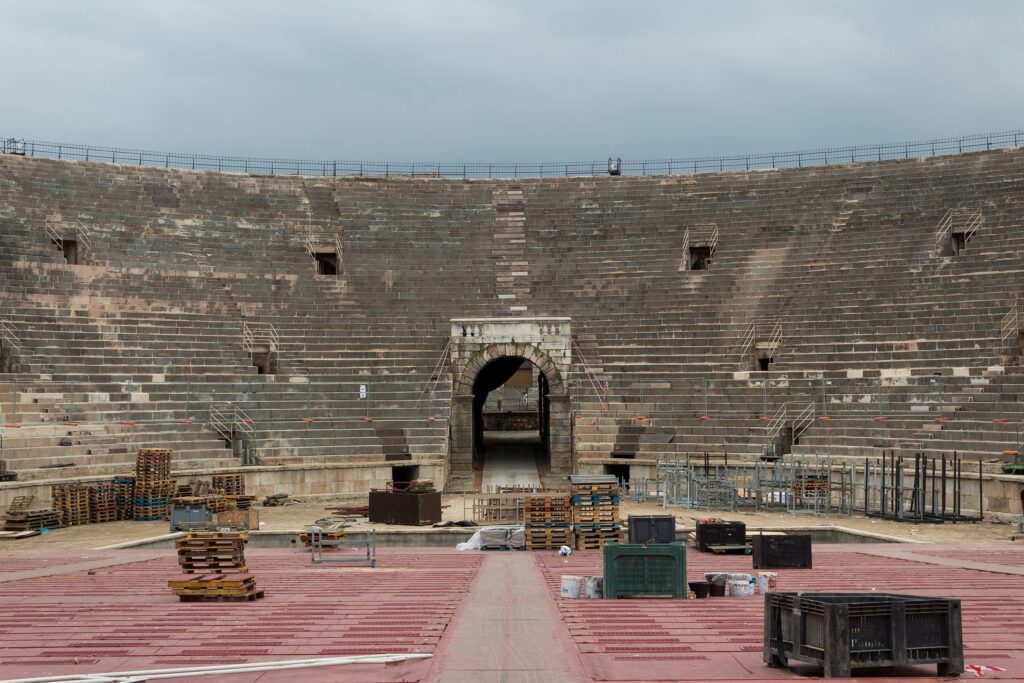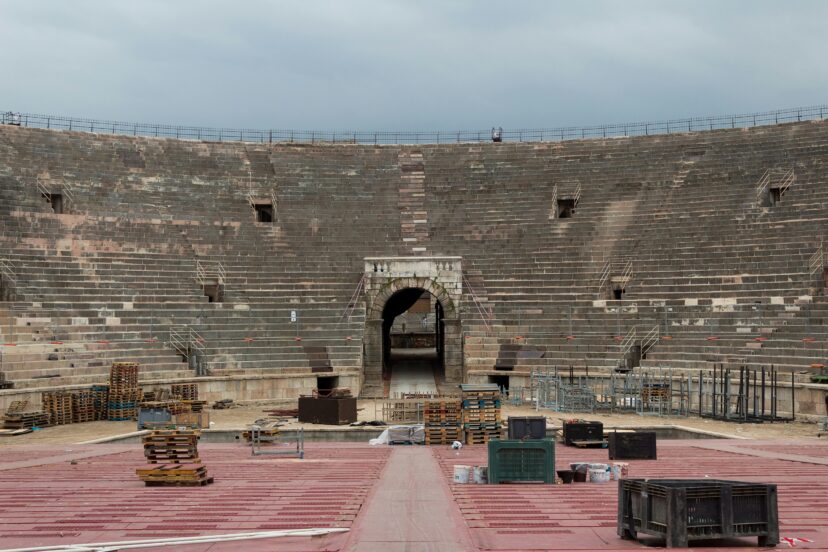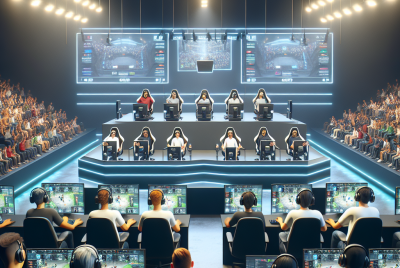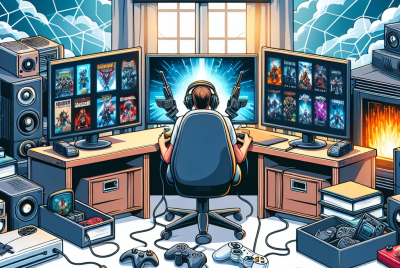Developing VR Games: A Step-by-Step Guide 1
Welcome to “Developing VR Games: A Step-by-Step Guide,” where we journey together through the exciting process of creating immersive virtual reality experiences. In this article, we’ll explore the essential steps of VR game development, from understanding the necessary hardware and software to mastering design principles and coding specifics. Whether we’re seasoned developers or just starting out, this guide provides the insights and tools needed to bring our VR game ideas to life, making the virtual world as thrilling and engaging as it can be. Let’s dive in and start creating! Have you ever wondered how to develop virtual reality (VR) games that can transport players to fantastical worlds, full of realistic experiences and immersive adventures? Well, we have too! Today, we’re excited to share a comprehensive guide on this very topic.
So, if you’re ready to embark on this exciting journey of VR game development, buckle up! Grab your virtual gear, and let’s dive into the fascinating and creative world of VR game creation.

Understanding Virtual Reality and Its Potential
What is Virtual Reality (VR)?
Virtual reality, commonly referred to as VR, is a simulated experience that can be similar to or completely different from the real world. It typically involves the use of a VR headset, which creates a fully immersive environment, cutting off the user’s interaction with the actual world and transporting them into a 360-degree virtual scene.
Why Develop VR Games?
The world of gaming has always been about pushing the boundaries of technology to create more engaging, immersive experiences. VR does this in spades by allowing players to actually ‘step into’ the game world. This opens up virtually limitless possibilities for storytelling, interaction, and gameplay. Imagine being able to walk through an enchanted forest, swing a sword in a medieval duel, or pilot a spaceship through an asteroid field—all from the comfort of your own home. That’s the promise and potential of VR gaming.
Step 1: Conceptualizing Your VR Game
Brainstorming Your Game Idea
Before you can start developing your VR game, you need a solid concept. What kind of experience do you want to create?
- Is it an action-packed adventure, a mystery puzzle, or a relaxing simulation?
- Who is your target audience?
- What will make your game stand out in the crowded market of VR experiences?
Creating Your Game’s Story and Mechanics
Once you have a basic idea, flesh it out with a detailed story and game mechanics. A narrative can be deeply immersive in VR; the players are not just watching a story unfold—they’re a part of it. Also, consider how players will interact with your game world. Will they use hand gestures, controllers, or a combination of inputs?
Example: Table of Key Elements in Game Conceptualization
| Concept Element | Details |
|---|---|
| Game Genre | Adventure, Puzzle, Simulation |
| Target Audience | Adults, Teens, General Public |
| Unique Selling Point | Immersive Storytelling, Unique Mechanics |
| Interaction Methods | Hand Gestures, VR Controllers |
Step 2: Choosing the Right Development Tools
VR Development Software and Platforms
There are several software development kits (SDKs) and game engines available for creating VR games. Some of the most popular ones include Unity, Unreal Engine, and CryEngine. Each comes with its own set of pros and cons, so let’s break them down a bit.
Unity
Unity is perhaps the most versatile and widely-used game engine available today. It supports a wide range of platforms including Oculus Rift, HTC Vive, and PlayStation VR.
Benefits of Unity:
- User-friendly interface
- Extensive asset store
- Good community support
Unreal Engine
Unreal Engine offers robust graphical capabilities and is often used for high-end VR experiences on platforms like Oculus Rift and HTC Vive.
Benefits of Unreal Engine:
- Superior graphics rendering
- Blueprint visual scripting
- Large community and tutorials
CryEngine
CryEngine is well-known for its cutting-edge graphics capabilities and is a less common but equally potent engine for VR development.
Benefits of CryEngine:
- Excellent graphic details
- Free to use with royalty terms
- Ideal for visually stunning games
Example: Comparison Table for Popular Game Engines
| Feature | Unity | Unreal Engine | CryEngine |
|---|---|---|---|
| Ease of Use | High | Medium | Medium |
| Graphics Quality | Good | Excellent | Excellent |
| Asset Store | Extensive | Moderate | Limited |
| Community Support | Strong | Strong | Growing |
Step 3: Building Your Game World
Designing Your Game Environment
The game environment in VR is more than just a backdrop; it’s a fully immersive world that players can explore. Here, every detail matters. Start by sketching out your game levels and world. Tools like Blender or Autodesk Maya can help you create 3D models and textures to populate your game.
Integrating 3D Models and Textures
Once your models and textures are ready, integrate them into your game engine. Both Unity and Unreal Engine have built-in tools for 3D asset integration, making it simpler to manage your game elements. You’ll also want to consider things like lighting and shaders to enhance the realism of your game world.
Adding Interactions
Player interactions can make or break a VR experience. This includes everything from how players move around the world to how they interact with objects. Using Unity’s Physics engine or Unreal’s Blueprint system, you can script these interactions to make them as intuitive and engaging as possible.

Step 4: Programming the Game Mechanics
Scripting Languages
In game development, scripting is essential. Unity uses C# and offers a comprehensive API for VR development. Unreal Engine, on the other hand, uses C++ but also offers a visual scripting language called Blueprints, making it easier for those who aren’t as comfortable with coding.
Core Game Mechanics
Now it’s time to bring your game mechanics to life. This includes everything from character movement and object manipulation to game physics and collision detection. Use the scripting capabilities of your chosen engine to code these mechanics.
Example: Basic Scripting Example in Unity (C#)
using System.Collections; using UnityEngine;
public class PlayerMovement : MonoBehaviour { public float speed = 10.0f;
void Update() { float translation = Input.GetAxis("Vertical") * speed; float strafe = Input.GetAxis("Horizontal") * speed; translation *= Time.deltaTime; strafe *= Time.deltaTime; transform.Translate(strafe, 0, translation); } }
Step 5: Audio and Sound Design
Importance of Audio in VR
Audio is a critical component in VR, adding another layer of immersion that transports players deeper into the game world. You’ll need ambient sounds, sound effects, and possibly a soundtrack to set the mood.
Tools for Audio Design
Software like Audacity and Adobe Audition can help you create and edit sound files for your game. Unity and Unreal Engine both support 3D audio, which means sounds can come from specific directions to enhance realism.
Integrating Audio
Integrate your audio files into the game engine and assign sound effects to various game events. For instance, you could have rustling leaves as a player walks through a forest or an ominous hum as they approach a dangerous area.
Example: Audio Integration in Unity
using UnityEngine;
public class AudioManager : MonoBehaviour { public AudioClip backgroundMusic; private AudioSource audioSource;
void Start() { audioSource = GetComponent(); audioSource.clip = backgroundMusic; audioSource.playOnAwake = true; audioSource.loop = true; audioSource.Play(); } }

Step 6: Testing and Debugging
Importance of User Testing
User testing is crucial in VR to ensure that the game is both functional and comfortable. VR experiences can often cause motion sickness if not designed correctly, so it’s vital to get feedback from real users.
Tools for Debugging
Both Unity and Unreal Engine come with built-in debugging tools that can help you identify and fix issues. Unity’s Console and Unreal’s Debugger are invaluable for troubleshooting problems.
Beta Testing
Once your game reaches a playable state, consider releasing a beta version to a small group of users. Collect their feedback to fine-tune game mechanics, fix bugs, and improve the overall experience.
Step 7: Optimization and Performance
Importance of Optimization
VR games require high frame rates to ensure a smooth and comfortable experience for players. Aim for at least 90 frames per second (FPS) to minimize motion sickness and provide a seamless experience.
Tips for Performance Optimization
- Reduce Polygon Count: Lower the complexity of your 3D models where possible.
- Optimize Textures: Use compressed textures to reduce memory load.
- Efficient Scripting: Avoid using heavy, complex algorithms that can slow down the game.
Example: Optimizing a Simple Scene in Unity
void Update() { if (Input.GetKeyDown(KeyCode.Space)) { // Perform an action that should be optimized ProcessHeavyTask(); } }
void ProcessHeavyTask() { // Optimized heavy task processing for (int i = 0; i




